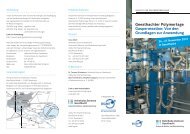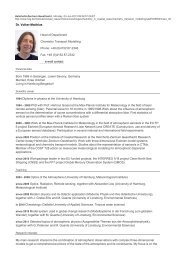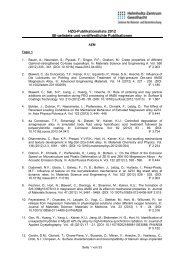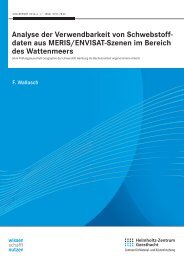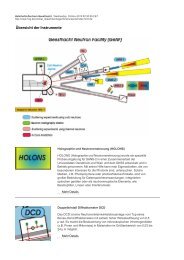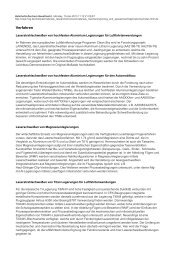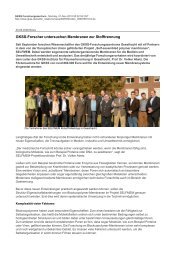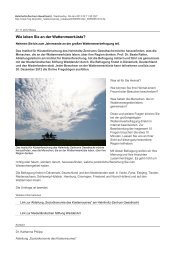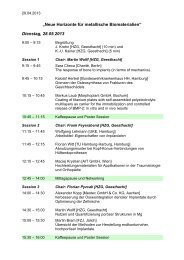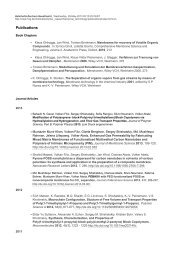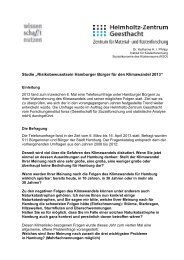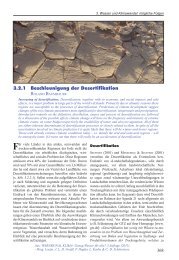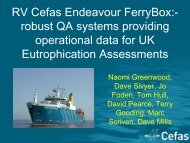Landfills and waste water treatment plants as sources of ... - GKSS
Landfills and waste water treatment plants as sources of ... - GKSS
Landfills and waste water treatment plants as sources of ... - GKSS
Create successful ePaper yourself
Turn your PDF publications into a flip-book with our unique Google optimized e-Paper software.
STUDY 1: LANDFILLS AS SOURCES<br />
4.3.2 Air concentrations <strong>of</strong> musk fragrances in the g<strong>as</strong>- <strong>and</strong> particle ph<strong>as</strong>e<br />
Musk fragrances in the g<strong>as</strong> ph<strong>as</strong>e were detected in all air samples. Figure 13 demonstrates<br />
musk fragrance concentrations at l<strong>and</strong>fill sites <strong>and</strong> their corresponding RFs. Individual<br />
concentrations <strong>of</strong> musk fragrances are given in the supporting information. Musk fragrance<br />
concentrations at l<strong>and</strong>fill LA ranged from146 (LA3) to 990 pg m -3 (LA1). In corresponding<br />
RF, these compounds were observed at 47 (RF9) <strong>and</strong> 84 pg m -3 (RF8). Concentrations at LB<br />
were observed from 579 (LB5) to 1947 pg m -3 (LB2). Concentrations <strong>of</strong> musk fragrances<br />
taken in air samples at RF simultaneously ranged from 50 to 1016 pg m -3 . HHCB <strong>and</strong> AHTN<br />
were the only compounds detected in all air samples. ADBI w<strong>as</strong> only occ<strong>as</strong>ionally observed<br />
(LA1, LA3, LA4, <strong>and</strong> RF20). AHMI w<strong>as</strong> only detected in sample LA4 (8 pg m -3 ). ATII <strong>as</strong><br />
well <strong>as</strong> both nitro musks were not observed in one <strong>of</strong> the samples. The average proportions in<br />
g<strong>as</strong>-ph<strong>as</strong>e samples were 85 % (HHCB) <strong>and</strong> 14 % (AHTN). Proportions <strong>of</strong> all g<strong>as</strong> ph<strong>as</strong>e<br />
samples from l<strong>and</strong>fills <strong>and</strong> corresponding RF are displayed in figure 14.<br />
Musk fragrances in the particle ph<strong>as</strong>e were constantly detected in samples from LB <strong>and</strong> its<br />
corresponding RF. LA samples were not contaminated with musk fragrances. In samples RF9<br />
<strong>and</strong> RF10 musk fragrances were observed. Sum concentrations at LB <strong>and</strong> its RF ranged from<br />
3 to 103 pg m -3 . Sum concentrations in RF9 <strong>and</strong> RF10 were <strong>of</strong> 20 <strong>and</strong> 30 pg m -3 , respectively.<br />
HHCB <strong>and</strong> AHTN were the only observed substances bound to particles. The proportions<br />
were dominated by AHTN (60 % or even higher) in the majority <strong>of</strong> particle ph<strong>as</strong>e samples. In<br />
samples LB3 <strong>and</strong> RF20 proportion <strong>of</strong> HHCB succeeds those <strong>of</strong> AHTN. In samples RF9 <strong>and</strong><br />
LB4 ratios <strong>of</strong> AHTN <strong>and</strong> HHCB are quite similar.<br />
56



